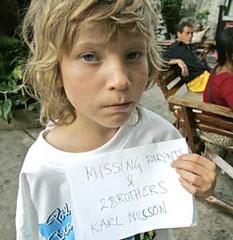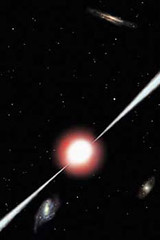NASA speculates that the megathrust earthquake may have shifted the Earth's axis, causing the Earth to wobble by an inch or so. The quake altered regional geography by a few meters and cut the length of the day by a few millionths of a second. The tsunami itself was felt as far as Mexico and right on into the Pacific.
And for all the nature worshipers out there, the deep ecologists and gaianists, this should serve as a reminder of just how much Mother Nature cares for the Earth's inhabitants. Here are some examples of how ant-like we truly are when confronted with the elements:
- Bangladesh was hit by a cyclone in 1970 killing 500,000 people. Winds of up to 230 km/h whipped up massive waves that took away entire villages.
- An 8.3 earthquake obliterated the Chinese city of Tangshan in 1976. The official number of people killed was put at around 250,000, although some said the figure was more like 750,000.
- Chinese provinces Shanxi and Henan lost more than 800,000 people when hit by a quake in 1556.
- In 1887, about 900,000 people died when China's Yellow River burst its banks in the worst-ever recorded flooding.
And if you think all this is bad, that's nothing. Of course, the Earth's creatures have suffered through phases of mass extinctions, many of them facilitated by catastrophic events like celestial object impacts. But worse still is what's happening across the Universe on a near daily basis as the result of gamma-ray bursts (GRBs).
A gamma ray burst, the single most powerful cataclysmic force known to us, occurs at a rate of about 1 per minute across the entire Universe. That's a rather terrifying figure considering the terrible punch that these explosions pack.
Likely the result of a black hole being created from a dying star, a GRB radiation blast spreads out evenly, with the gamma-ray energy released by the burst being equivalent to that which would be produced by converting the entire mass of a star 1.3 times the mass of our Sun completely into gamma radiation. Put into perspective, if a GRB were to happen as far away as 2,000 light years, it would shine twice as bright in our night sky as the Sun does during the day. Given a GRB close enough to Earth, it would rip apart our ozone layer and likely extinguish life on our planet.
Consequently, it is speculated that GRBs are a major factor in regulating the presence of extraterrestrial civilizations across galaxies. Some believe that a GRB can sterilize as much as a quarter of an entire galaxy. Given even modest guesses about the number of extraterrestrial civilizations per galaxy, and given that a GRB happens at a rate of 1/minute across the Universe, it's safe to assume that mass civilization extinctions are happening across the Universe on a daily basis.
The Universe, it appears, is a very dangerous and indifferent place. What's not indifferent, however, are the sentiments and actions of its intelligent inhabitants.



No comments:
Post a Comment
Note: Only a member of this blog may post a comment.